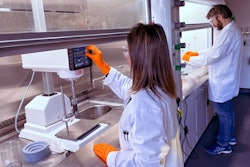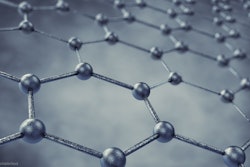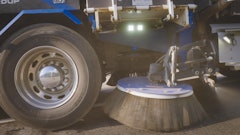
The novel “supermaterial” graphene could hold the key to making one of the oldest building materials greener, new scientific research suggests.
Graphene has been incorporated into traditional concrete production by scientists at the University of Exeter, developing a composite material which is more than twice as strong and four times more water-resistant than existing concretes.
Unlike previous attempts to use nanotechnology in concrete, which have focused on modifying the existing components of cement, the new technique allows a layer of graphene to be suspended in water.
The method produces a high yield of concrete without defects, which can be used in conjunction with modern manufacturing techniques and could be scaled up, the researchers believe, at a relatively low cost.
The composite could be used directly on building sites, enabling the construction of strong and durable buildings using less concrete and reducing greenhouse gas emissions. Using graphene meant the researchers were able to roughly halve the amount of materials used to make concrete.
Its water resistance makes it suitable for construction in areas that are hard to reach for maintenance, while the strength of the composite will make buildings more resilient to future shocks and strains, researchers say. In addition, the technique could be copied in incorporating other nanomaterials into concrete construction in the future, which could pave the way to further innovations in the industry.






![Andrew Buchanan 1508867 Unsplash 5cd98e11518fe[1]](https://img.forconstructionpros.com/files/base/acbm/fcp/image/2021/01/andrew_buchanan_1508867_unsplash.5cd98e11518fe_1_.60005a224b8d9.60005a2eed69d.png?auto=format%2Ccompress&fit=crop&h=167&q=70&rect=0%2C0%2C1920%2C1080&w=250)











